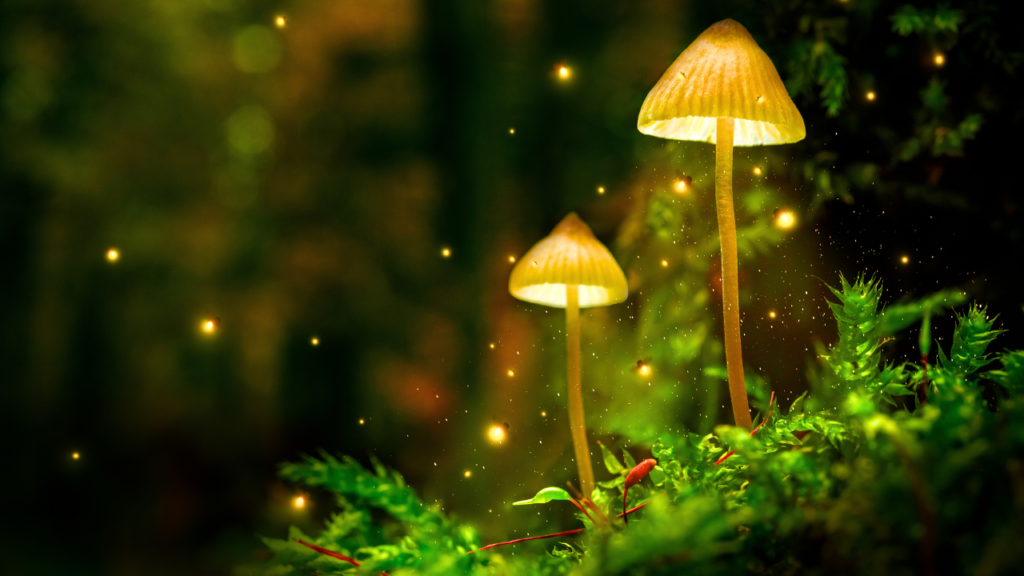Learn how to grow Shiitake mushrooms in your yard, garage, or almost anywhere else.
Guidelines for Growing Shiitake Mushrooms

Shiitakes are some of the most pricey and tasty gourmet mushrooms on the market. In Asia, they are also thought to have health benefits like lowering cholesterol and making people less likely to get cancer. They are simple to grow in logs, and it takes them between 6 and 18 months to come up.
They can still produce fruit in temperatures just above freezing or nearly 90 degrees F. These steps will show you how to grow Shiitake mushrooms on logs.
You will need 4 to 6 inch-diameter oak or beech logs, a strong drill, shiitake spawn (most likely a strain that will grow well in your area; ask the supplier for more information), a hammer, and hot wax (like cheese wax or candle wax) that can be melted to seal the spawn in.
How to Do It

Get logs made of hardwood. If you want to use new wood, let it sit for at least six weeks after cutting it down. If you can, leave the bark on.
Make rings of holes that are 1 inch deep in the log. The holes should be 6 inches apart, and the rings should be 1½ to 2 inches apart. If possible, switch the holes around so that they are spaced out evenly and in a zigzag design.
Put the shiitake spawn into these holes. There are three ways to buy this from suppliers: inoculated wooden
dowels, sawdust that isn’t packed down, or bits of sawdust that are. If you can find them as dowels, use a hammer to drive them into the holes you made. If not, put the sawdust spawn into the holes.
Most people like to use hot wax to seal in the spawn. This makes the outside clean and keeps animals and insects from getting in during the incubation time.
It takes the mycelium about 6 to 18 months to grow through the wood. You can store the logs in the garage in a plastic bag or outside on the ground with a plastic tarp over them for now. To make sure there is enough movement, make sure to poke a few holes in any plastic covering you use.
Water the log with nonchlorinated water when it needs it to stay wet. If everything goes well, the plastic will help keep the humidity up, but if it gets dry, you should water gently up to twice a week. Some types of log-raised mushrooms need to be in direct contact with soil (through a partly buried log), but shiitakes don’t.
From the same logs, the shiitake mushrooms will bloom every year for another 4 to 5 years. Just remember to keep the logs a little damp at all times. They will show up when they want to.
Putting the log in ice water every two months or so is one way to start a bloom after the first bloom cycle. About a week after the ice water treatment, mushrooms will start to grow. You might want to soak different logs at different times so that they don’t all grow at the same time.
When do you make Shiitake Logs?

The fact that we are in Zone 4 means that it gets frigid here. I know that in some places you can inoculate the logs in the fall, but I don’t know much about it. The logs need to be warm enough for a long enough time so that the mycelium can grow on them before they freeze.
Making Shiitake mushroom logs here is done in the spring, after the risk of frost has passed and the temperature is usually in the 40s. This is also the best time to harvest the logs. Most people make Shiitake logs in the spring.
Finding and Cutting Down Logs for Shiitakes

There are lots of different kinds of trees that can be used to grow mushrooms. You’ll get slightly different results with each species.
For example, some logs will grow mushrooms faster than others, and the mushrooms will taste a little different from one type of wood to the next. People who grow Shiitake mushrooms say that white oak is the best type of wood to use.
All types of oak are better, but white oak is the best.
For excellent trees, choose alder, American beech, blue beach, hornbeam, ironwood, tough maple (sugar), and sweet gum.
Woods that work well are Black Gum, Sulpher Bud, Black Birch, Paper Birch, Black Gum, Tupelo, Cherry, Eucalyptus, Soft Maple (Silver and Red), Sassafras, and Sourwood.
Superior means the best provider overall. Highly recommended = very good. Satisfactory means only somewhat satisfactory.
Field & Forest knowledge on the Types of Wood

The logs must come from REAL trees. This is important. Do not use wood that has been cut down, died, or fell over.
Logs of shiitake mushrooms should be 36 to 48 inches long and 3 to 8 inches wide. You can make mushroom logs from either the roots of young trees or the branches of older, bigger trees.
It’s best to pick trees that don’t have flaws or bark that is moving or broken. Sometimes, when you cut down a tree, it will get hurt, and you can’t help it. Be careful with the logs. It’s best to keep the bark as smooth as possible because it will need to be covered in wax.
When the trees are not growing, the logs should be cut down. That is, from the time the leaves start to change color in the fall until the buds start to open in the spring. If possible, the logs should be cut down as close to the time of inoculation as possible. If not, competing fungi have a better chance of getting into them, and they need to be kept in excellent shape until the time of inoculation. We kept ours for a little more than a month before giving them to people.
Once the logs are cut, they need to stay moist and keep out competing fungus. Putting them in the shade and covering them with a tarp is the best way to do this.
Picking a Type of Mushroom Spawn

It’s just a word for a medium that has been mixed with mycelium. Mycelium is made up of mushroom cells that look like threads. Mycelium is like the plant that mushrooms grow on if it were a veggie.
You can choose from three groups of mushroom strains:
A lot of Most of the time, shiitakes fruit when the temperature is between 50F and 75F. It will take these types of plants a year to grow before they bear their first fruit, but you may see fruiting as early as six months (we did!). These types are the most forgiving and straightforward to grow, so beginners should start with them.
Shiitake mushrooms should be between 45F and 60F for the fruit to ripen. It will take these types of plants one year to grow in a greenhouse and then another year before they bear their first fruit. You might not get mushrooms for up to two years! Why bother? People say that cold weather spots are the most beautiful and also the richest and best tasting!
Warm Weather Most of the time, shiitakes fruit when the temperature is between 50F and 80F. Since these types are said to do better with soft hardwoods, they might be a better choice if that’s what you have on hand.
Finding excellent mushroom spawn can make a big difference in how well you can grow Shiitake mushrooms. I think you should buy from a reliable producer directly instead of a third-party seller. Field & Forest is where we get our mushroom spawn and where our mushroom boss gets spawn for his business.
The “West Wind” strain is suitable for a wide range of conditions, and the “Bellwether” variety is suitable for cold weather.
The sawdust spawn should be in a tightly sealed bag and still quite moist when it reaches you. It’s fine if it has white stuff growing on it; that’s just mycelium! Just add that to the mix so it can be used too. As soon as you get the spawn, put it in the fridge until you’re ready to use it. This should be written on the bag.
How Much Mushroom Spawn Do I Need?

There are about 25 36- to 48-inch long and 3 to 8-inch wide logs that can be inoculated with one 5.5-pound bag. Of course, this is just a guess; it will depend on how big your logs are. We had a lot of logs that were much bigger than the rest, so in the end we had fewer logs.
At the most basic level, I think anyone can grow mushrooms successfully. But if you want to grow specialty types or do this for a living, you will need to learn a lot more. You should do a lot of studying, read some books, connect with a local group of mushroom fans, and try things out for yourself to learn how to do them right.

